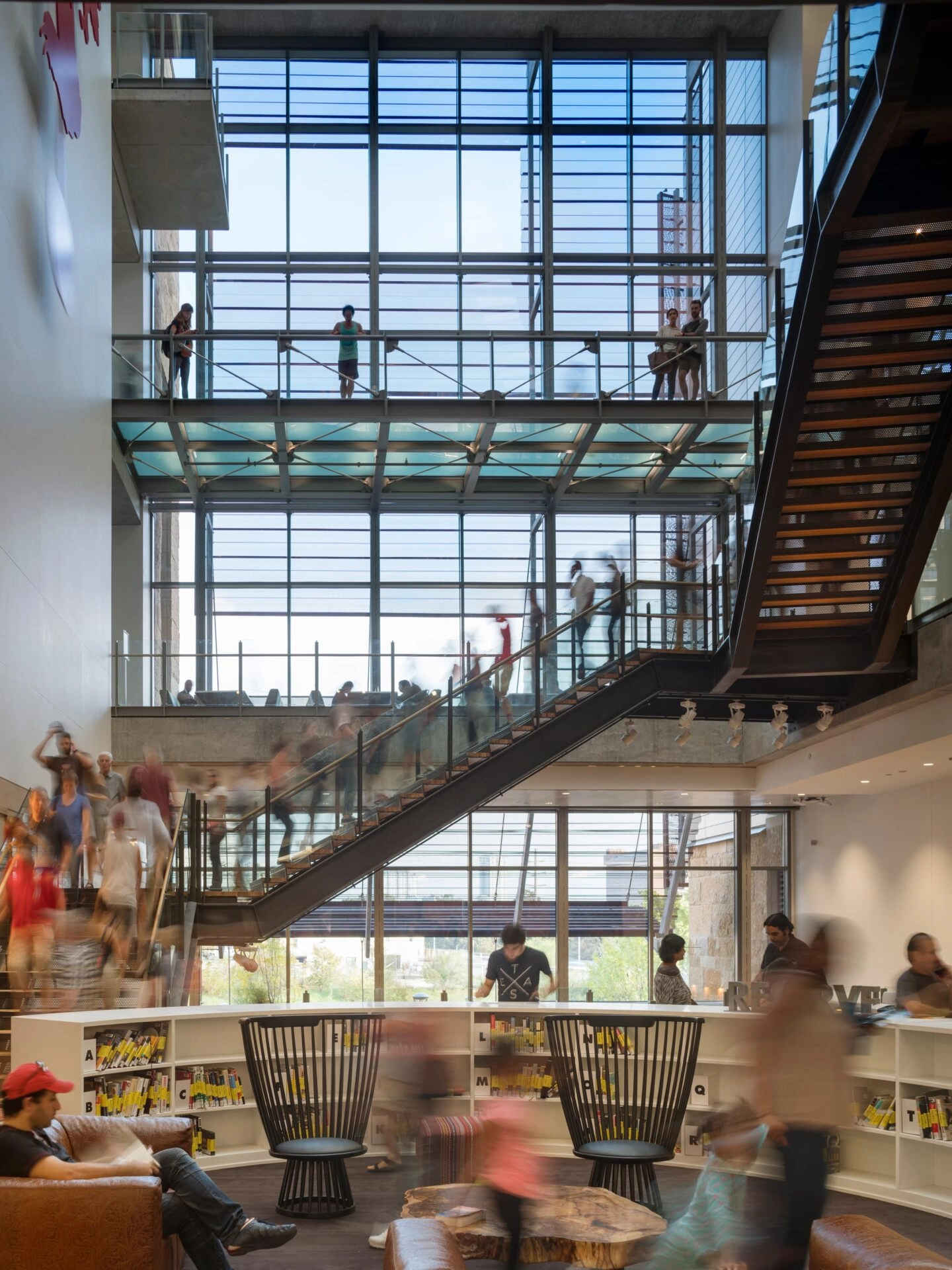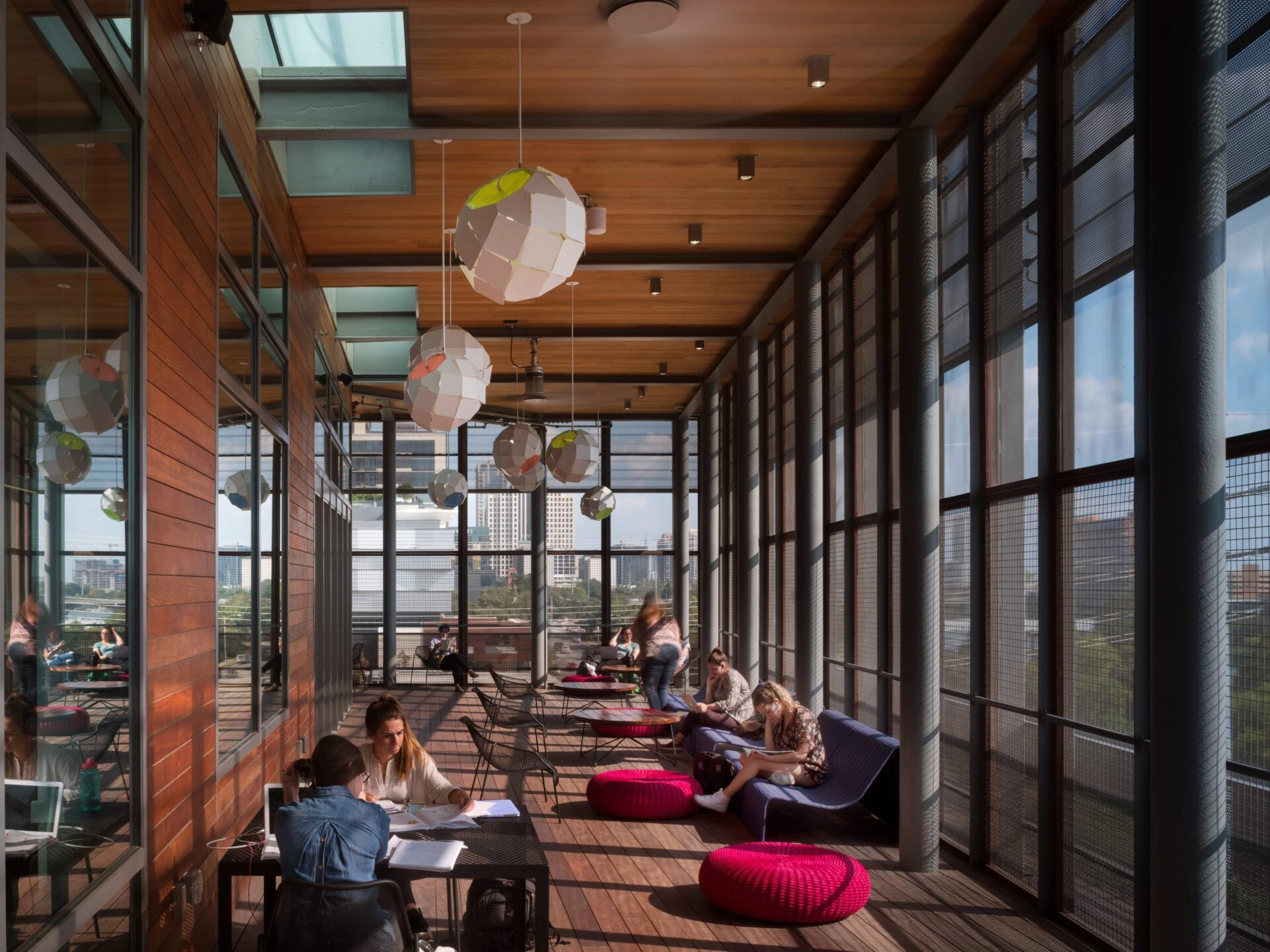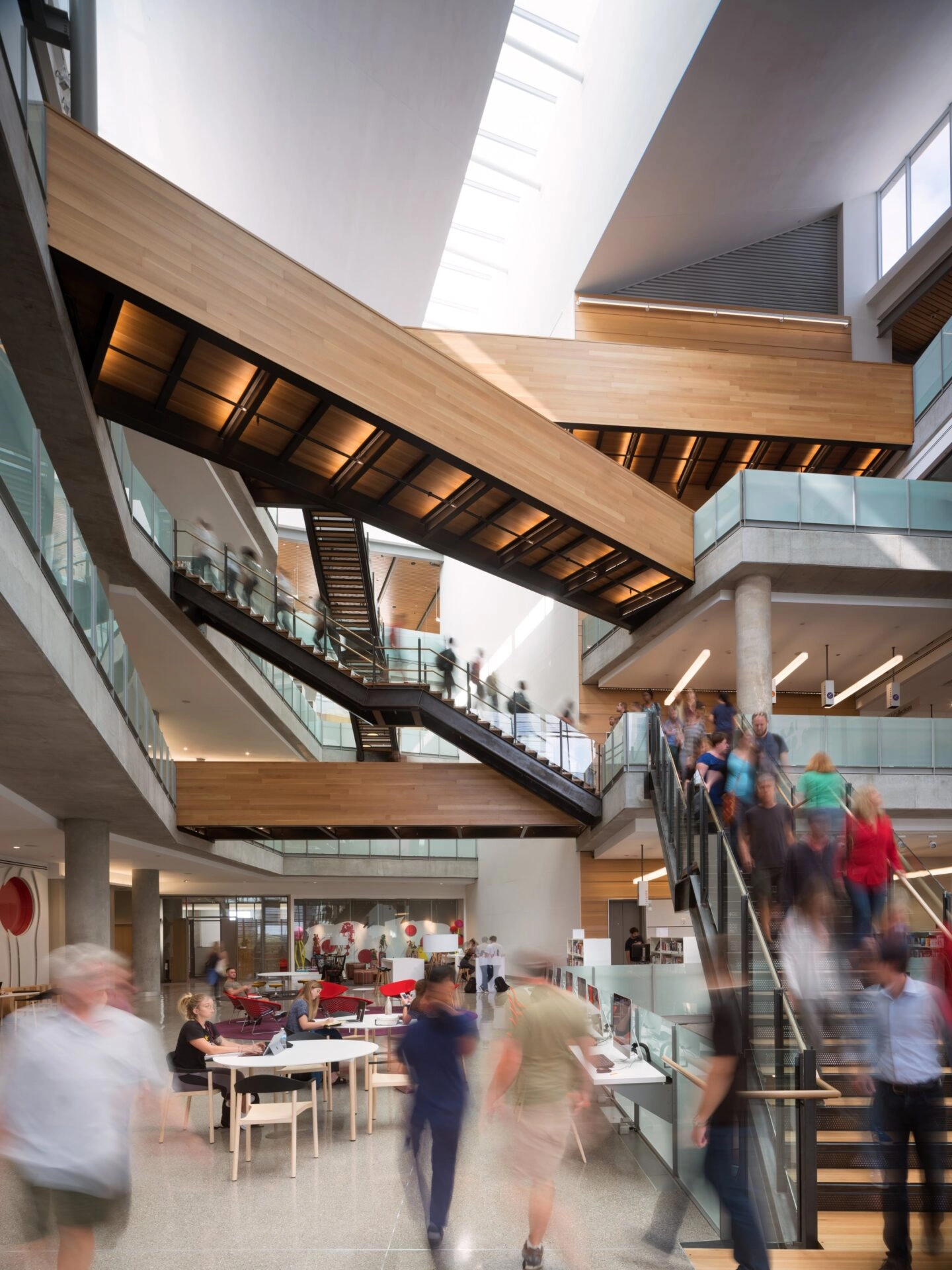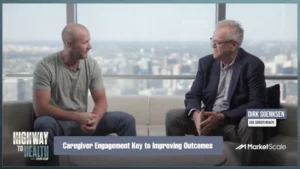MarketScale’s Best of 2018: How the Austin Central Library Became An Architectural Icon
The American Library Association estimates there are 116,867 libraries in the United States. One of these libraries, however, has been in the limelight since it opened its doors to the public on Oct. 28, 2017 – and for good reason.
Perched above Lady Bird Lake and skirted by Shoal Creek, the new, futuristic Austin Central Library is bursting at the seams with seemingly infinite ways visitors can access knowledge and engage with one another.

“This is not your mother’s library,” John Gillum, Facilities Process Manager for the Austin Public Library said. “We wanted the library to be a destination for visitors from near and far and I think we accomplished that.”
This summer, TIME Magazine named it one of the “2018 World’s Greatest Places [to Visit].”
“It was amazing,” Gillum remarked. “We were already inundated with customers every day – between 5,000 and 8,000 people – and it jumped up to 10,000.”
Before it shut its doors, the original downtown library, built in 1976, was only seeing around 800 daily visitors.
The six-story, 198,000 square-foot “library of the future,” took eight years to build and caused many sleepless nights for the project teams. Led in a joint venture by two award-winning architecture firms, Lake|Flato and Shepley Bulfinch, a project of this magnitude required hundreds of specialists, contractors and sub-contractors, a myriad of designers and sub-consultants – they even hired a library futurist.

The new library was funded by a city bond election in 2006, winning high approval by Austin residents, hungry for a new-age library. The land was donated by Austin Energy.
“We set some rigorous goals to use as our North Star in the design process,” Lake|Flato Project Architect on the library Jonathan Smith said. “We wanted to create a hub or gateway of knowledge.”
The architects aspired to design the most daylit library in North America. Additionally, the daylight helps lower the building’s energy consumption. Another sustainable feature was the use potable water and regional and recycled materials.
The rigorous goals set early on by the design team paid off.
The Austin Central Library received the highly coveted LEED Platinum Certification. Leadership in Energy and Environmental Design (LEED) is the most widely used green building rating system in the world and a LEED certification symbolizes sustainability achievement. A platinum designation requires the building to score at least 80 out of a maximum 110 points.
The City of Austin requires at least a LEED Silver certification on all new buildings.

“We were all totally committed to make this the greenest building that our expertise, knowledge and abilities could produce, and we never wavered from that over the duration of the project,” Gillum said.
During a sustainability workshop early in the project, a group of consultants and the design team visited the site where the library would be built. While on site, the group discovered a 373,000-gallon vault under the old electrical sub-station. Working with the city’s utility company, they ran a pipe from the vault to the library to create a cistern that collects rainwater and condensate, used to flush toilets and provide irrigation for the library. Potable water is only used for hand washing and drinking.
“It was really a win-win that we were able to take this abandoned piece of infrastructure and adaptively reuse it to make the new building more sustainable and cheaper for everyone to utilize,” Smith said.

Eighty percent of regularly occupied spaces in the building are effectively daylit. Smith said the atrium was born from a daylight study conducted by the design team and was used as one of the major drivers to program the entire layout of the building through a hierarchy of daylight.
“Library daylight is such an important factor, especially for a large central library,” said Smith. “We had this idea, knowing how impactful daylight is on people, of having great daylight for reading,” Smith noted.
With all the daylight streaming into the building, the design team had to consider the intense Texas sun. They used high-performance glass and a 12-foot overhang at the top of the building that shades almost all the apertures. The different facades of the building also respond differently to the sun.
On the west side, perforated metal screening blocks some of the sun and provides shading. On the north side, the screen is not there because when the sun hits this side it is shaded by the roof. Lightweight materials like metal paneling and perforated aluminum scrim were used on the front of the building, which makes it feel like a large screened-in porch overlooking the lake.
“We effectively tuned the different facades to the different orientations of the sun,” Smith said.
The majority of structural steel used on the project is recycled and all of the exterior aluminum and the perforated corrugated product is as well. The limestone used on and around the building was brought in from Lueders, Texas, a town west of Fort Worth.
Inside, the library has other ways of staying sustainable. The elevators are regenerative, meaning that as their counter weights go down and break, they throw energy back into the building.
There is a 180-kw solar photovoltaic (PV) array on the roof, which powers about 13 percent of the building and provides shade for the rooftop garden, complete with a native Texas live oak tree and native Texas plants from within a 100-mile radius. Each plant is identified, so visitors can learn more about the local flora.
All of this means the library uses 40 percent less energy than a building of comparable size.
Another unique learning opportunity is found in the Technology Petting Zoo, where people can try out new tech gadgets, like a 3-D printing machine and Phillips Hue smart Wi-Fi lights. The American-Stateman, a local newspaper, has partnered with the Austin Library, providing a column with monthly reviews of the gadgets available for hands-on testing at the petting zoo.
“Youngsters of all ages are really good about showing up and trying them out,” Gillum said.
With all the outlets to learn, patrons need to fuel their brains with food from the Cookbook Bar and Café, where the menu is inspired by recipes from cookbooks. On days when a chef author is in town talking about their latest book, they put a recipe or two on the menu that week. Oftentimes the chef will use the cooking demonstration room to create one of their dishes.
There is more knowledge packed into this library far beyond the 500,000 available books; with an art gallery, a shared work space, a 350-seat event space, walkways and stairwells that intersect to invite conversation and serendipitous connections, and a space for teenagers and children that takes up almost an entire floor, the wonder of this place is seemingly endless.
“It has become a civic landmark,” Smith said. “It is really fun to see the whole community embrace this building for learning and building new things. It has become Austin’s community living room.”
For the latest news, videos, and podcasts in the AEC Industry, be sure to subscribe to our industry publication.
Follow us on social media for the latest updates in B2B!
Twitter – @AECMKSL
Facebook – facebook.com/marketscale
LinkedIn – linkedin.com/company/marketscale








